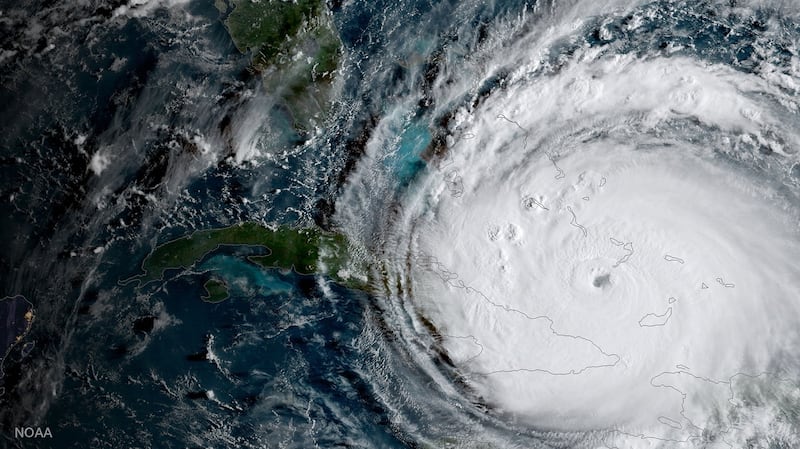Hurricane Irma is hurtling towards Florida with 125 mph winds on a new projected track that could put the Tampa area rather than Miami in the crosshairs, with the window closing fast for anyone wanting to escape.
The Tampa area has not taken a direct hit from a major hurricane in nearly a century.
“You need to leave – not tonight, not in an hour, right now,” Governor Rick Scott warned residents in the evacuation zones ahead of the storm’s predicted arrival on Sunday morning.
For days, the forecast had made it look as if the Miami metropolitan area of six million people on Florida’s Atlantic coast could get hit head-on with the catastrophic and long-dreaded Big One.
The westward swing in the hurricane’s projected path overnight caught many on Florida’s Gulf coast off guard.
By late Saturday morning, few businesses in St Petersburg and its barrier islands had put plywood or hurricane shutters on their windows, and some locals groused about the change in the forecast.
“For five days, we were told it was going to be on the east coast, and then 24 hours before it hits, we’re now told it’s coming up the west coast,” said Jeff Beerbohm, a 52-year-old entrepreneur in St Petersburg. “As usual, the weatherman, I don’t know why they’re paid.”
Storm surge
Tampa has not been struck by a major hurricane since 1921, when its population was about 10,000, National Hurricane Centre spokesman Dennis Feltgen said. Now the area has around three million people.
Forecasters warned of a storm surge as high as 15 feet along a swath of south-west Florida and beyond.

“This is going to sneak up on people,” said Jamie Rhome, head of the hurricane centre’s storm surge unit.
With the new forecast, Pinellas County, home to St Petersburg, ordered 260,000 people to leave, while Georgia scaled back evacuation orders for some coastal residents.
Irma has left more than 20 people dead in its wake across the Caribbean, ravaging such resort islands as St Martin, St Barts, St Thomas, Barbuda and Antigua.
The storm weakened slightly in the morning but was expected to pick up strength again before hitting the Sunshine State.
Meteorologists predicted its centre would blow ashore on Sunday in the perilously low-lying Florida Keys, then hit south-western Florida and move north, ploughing into the Tampa Bay area.
Though the centre is expected to miss Miami, the metro area will still get pounded with life-threatening hurricane winds, Mr Feltgen said.
On Saturday morning, the state was already beginning to feel Irma’s muscle.
Nearly 30,000 people had lost power, mostly in and around Miami and Fort Lauderdale, as the wind began gusting.
In Key West, 60-year-old Carol Walterson Stroud sought refuge in a senior centre with her husband, granddaughter and dog. The streets were nearly empty, shops were boarded up and the wind started to blow.
“Tonight, I’m sweating,” she said. “Tonight, I’m scared to death.”
Petrol shortages and gridlock
In one of the biggest evacuations ever ordered in the US, about 6.4 million people in Florida – more than a quarter of the state’s population – were warned to leave. Petrol shortages and gridlock plagued the evacuations. Parts of interstates 75 and 95 north were bumper-to-bumper.
Some 54,000 people crowded 320 shelters across Florida.
At Germain Arena not far from Fort Myers, on Florida’s south-western corner, thousands waited in a snaking line for hours to gain a spot in the hockey venue-turned-shelter.
“We’ll never get in,” Jamilla Bartley lamented as she stood in the parking lot.
The governor activated all 7,000 members of the Florida National Guard, and 30,000 guardsmen from elsewhere were on standby.
Major tourist attractions, including Walt Disney World, Universal Studios and Sea World, all prepared to close on Saturday. The Miami and Fort Lauderdale airports shut down, and those in Orlando and Tampa planned to do the same later in the day.
With winds that peaked at 185 mph, Irma was once the most powerful hurricane ever recorded in the open Atlantic.
Given its mammoth size and strength and its projected course, it could still prove one of the most devastating hurricanes ever to hit Florida and inflict damage on a scale not seen in the area in 25 years.
AP















